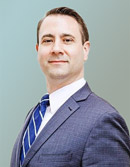Below you will find a real life case study of a couple who is looking for financial advice on how best to arrange their financial affairs. Their names and details have been changed to protect their identity. The Globe and Mail often seeks the advice of our Portfolio Manager & Senior Financial Planner, Matthew Ardrey, to review and analyze the situation and then provide his solutions to the participants.
![]()
Written by: Dianne Maley
Special to The Globe and Mail
Published June 12, 2025

Can this retiree avoid higher taxes after making a big city move?
Ned plans to move back to Toronto from Calgary next year, and wants to know how he can avoid a major tax bill.
Ned is 70 years old, retired and living in Calgary. He has three children who all live and work in Toronto, where he is from originally.
“I plan to move back there next year after living in Calgary since 2000,” Ned writes in an e-mail. “I own my own home – valued at nearly $1-million with no mortgage – and have significant financial assets.” He plans to buy a home in Toronto with a rental suite.
“Given that provincial income tax rates are higher in Ontario than Alberta, my question is whether I should cash in my registered retirement savings plan (RRSP) and crystallize my capital gains this year to avoid having to pay higher tax rates when I move to Ontario,” Ned asks.
He also wonders whether he should look into setting up a family trust as a way to save on taxes and transfer assets to his children when he dies “without triggering a lot of tax.”
While Ned has no work pension, he has substantial investments. His target retirement spending is $15,000 a month after tax, including overseas travel.
We asked Matthew Ardrey, portfolio manager and senior financial planner at TriDelta Private Wealth in Toronto, to look at Ned’s situation. Mr. Ardrey holds the certified financial planner and advanced registered financial planner designations.
What the expert says
Ned’s main concern is the difference in tax rates between Alberta and Ontario, Mr. Ardrey says. “He wonders if he is better off realizing taxes now in Alberta before moving to Ontario.”
Fuelling Ned’s concerns is his investment portfolio worth almost $4.8-million, the planner says. “Embedded in the non-registered accounts is a capital gain of $1.2-million.” In addition, he has $1.05-million in registered accounts, which are fully taxable when withdrawn.
Ned owns a house in Calgary worth $975,000. He plans to buy a home in Ontario for between $1.5-million and $2.5-million. “We have used $2-million for purposes of this projection,” Mr. Ardrey says. Ned plans to rent out part of the new house for $2,000 a month.
Other than Canada Pension Plan benefits of $800 a month, Ned has no other sources of income other than from his portfolio. His Old Age Security benefits are clawed back.
Ned’s overall asset mix for his portfolio is 60-per-cent stocks, 26-per-cent bonds, 2-per-cent preferred shares, and 12-per-cent cash equivalents. “This gives him an expected future rate of return of 4.93 per cent. Expected inflation is 3 per cent for this projection,” the planner says.
Ned spends $15,000 a month after tax, or $180,000 a year. In preparing his forecast, the planner assumes that Ned lives until age 95.
“In the first scenario, we assume no financial assets are sold in Alberta before moving to Ontario,” Mr. Ardrey says. This results in retirement success under the straight-line return assumption – where all the inputs stay the same – but there is little left over at age 95 for Ned in terms of his investment assets. “At age 95, there is only $135,000 remaining.”
In trying other scenarios, in which Ned sold and took his gains, redeemed his registered accounts or did both fully before leaving Alberta, the result was that his investment assets did not last until age 95. “Thus, these scenarios were discounted.”
“If he took a massive tax hit all at once at the beginning of the retirement projection, it would be more detrimental than taking lower amounts – potentially at lower tax brackets – in the future so his assets can continue to grow,” the planner says.
“That being said, there is an opportunity to optimize Ned’s withdrawals before leaving Alberta,” Mr. Ardrey says. Ned will need about $1-million – in addition to the million or so he hopes to get when he sells his existing house – to buy his Ontario home. It is more tax-efficient to withdraw the money from his investments while he still lives in Alberta.
“We assume he raises half from his registered accounts and half through the non-registered,” the planner says. This increases the remaining assets at age 95 to $715,000.
“To truly understand the risk in this plan, we need to move beyond the straight-line projection, as we know that life and investments rarely ever move in a straight line,” Mr. Ardrey says. “To ensure the viability of this plan, we stress test it by using a Monte Carlo simulation.” A Monte Carlo simulation introduces randomness to a number of factors, including returns, to stress test the success of a retirement plan.
“In this plan, we have run 1,000 iterations with the financial planning software to get the results,” he says. For a plan to be considered likely to succeed by the program, it must have at least a 90-per-cent success rate, meaning at least 900 trials out of 1,000 succeed. If it is below 60 per cent, then it is considered unlikely to succeed. In between is somewhat likely.
The Monte Carlo stress test shows that there is risk in this plan despite its straight-line success, the planner says. “By age 87, the success rate drops to 89 per cent and by age 95, to 48 per cent,” he says. “There is about a 50-50 chance that this plan may fail for Ned.”
If Ned’s investments are not keeping up with his spending, at some point in the future he may have to use his home to finance the remainder of his retirement, Mr. Ardrey says. This would give him a cash injection that would offset a potentially deficient portfolio. Other options would be to purchase a less expensive home in Ontario or to reduce his spending.
The final question Ned asks is about putting funds into a family trust for his children. He has already gifted some money to them.
“My concern is that he needs all of his funds for himself and his own retirement,” Mr. Ardrey says. Moving the funds into a trust would mean he no longer has ownership of them. “This projection has shown that he does need the funds, unless he lowers his retirement spending.”
Ned’s substantial wealth is reduced next year when he cashes in some of his investments to buy a Toronto home. The small amount of rental income he anticipates represents a 1.2-per-cent return on the $1-million or so he will withdraw from his investments. When combined with $180,000 a year of spending, rising with inflation, and taxes over the next 25 years, the assets begin to dwindle.
“Unfortunately, there is no magic formula with retirement planning,” Mr. Ardrey says. To improve the situation or achieve other goals, such as gifting to his children, Ned needs to reduce costs in other areas.
“Of course, he could also have better-than-expected investment returns, but that cannot always be relied upon,” the planner says. “The saving grace of this plan is his real estate. It will provide Ned with a financial cushion that will cover the risks exposed by the Monte Carlo analysis.”
It’s worth noting that Ned’s monthly outlays include $6,000 of unallocated spending. Ned has said he wants to give more money to his children in his estate or “perhaps sooner if possible.” He’s already given $625,000 between them with another $125,000 coming this fall.
“So, we can assume the unallocated spending is going to them and that he can stop it or lower the amount if and when he can no longer afford to continue,” Mr. Ardrey says.
Client situation
The people: Ned, 70, and his three adult children.
The problem: Should he sell and take his capital gains before he leaves Alberta, where the tax rate is lower than Ontario? Should he set up a family trust?
The plan: Rethink his two competing goals: spending freely now or leaving more money to his children. Be open to spending less or eventually having to sell the Toronto home to supplement his income.
The payoff: A clear understanding of the trade-offs.
Monthly net income: As needed
Assets: Cash $1,000; bonds $554,000; stocks $2,832,000; tax-free savings account $234,000; RRSP $1,053,000; residence $975,000. Total: $5.6-million.
Monthly outlays (residence only): Property tax $500; water, sewer, garbage $100; home insurance $140; heat, hydro $200; maintenance, garden $200; transportation $480; groceries $500; clothing $210; gifts, charity $500; vacation, travel $2,500; other discretionary $2,000; dining, drinks, entertainment $900; sports, hobbies $200; subscriptions $100; other personal $2,000; health care $100; life insurance $170; phones, TV, internet $280; TFSA $585; unallocated credit card spending $2,000. Total: $13,665.
Liabilities: None.
Want a free financial facelift? E-mail finfacelift@gmail.com.
Some details may be changed to protect the privacy of the persons profiled.

Presented By:
Matthew Ardrey
Portfolio Manager & Senior Financial Planner
matt@tridelta.ca
(416) 733-3292 x230
